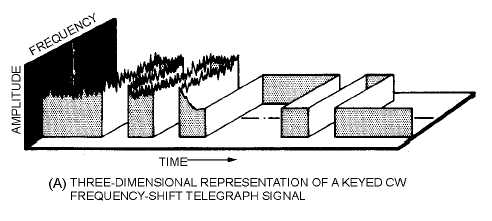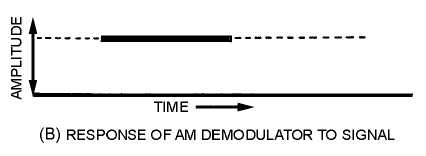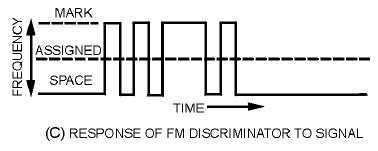2-5
Figure 2-3A.—Comparison of AM and fm receiver response to an fm signal. THREE-DIMENSIONAL
REPRESENTATION OF A FREQUENCY-SHIFT KEYED TELEGRAPH SIGNAL.
Figure 2-3B.—Comparison of AM and fm receiver response to an fm signal. RESPONSE OF AM
DEMODULATOR TO SIGNAL.
Figure 2-3C.—Comparison of AM and fm receiver response to an fm signal. RESPONSE OF FM
DISCRIMINATOR TO SIGNAL.
CW SIGNALS.—Since cw signals are of essentially constant frequency, there is no variation along
the frequency axis in view (A) of figure 2-2. The complete intelligence is carried as variations in the
amplitude of the signal. To receive the intelligence carried by such a signal, the receiving equipment must
be able to scan the signal along the time and amplitude axes, which carry the information. When scanned
along the time and amplitude axes [shown in view (B)], the intelligence appears as large changes in
amplitude. If the circuit were perfect, these variations would be from 0 amplitude to some maximum
value (established by transmitter power, distance, and so forth) depending on whether the key were open
or closed. However, interfering components of energy caused by atmospherics, interfering stations, and





